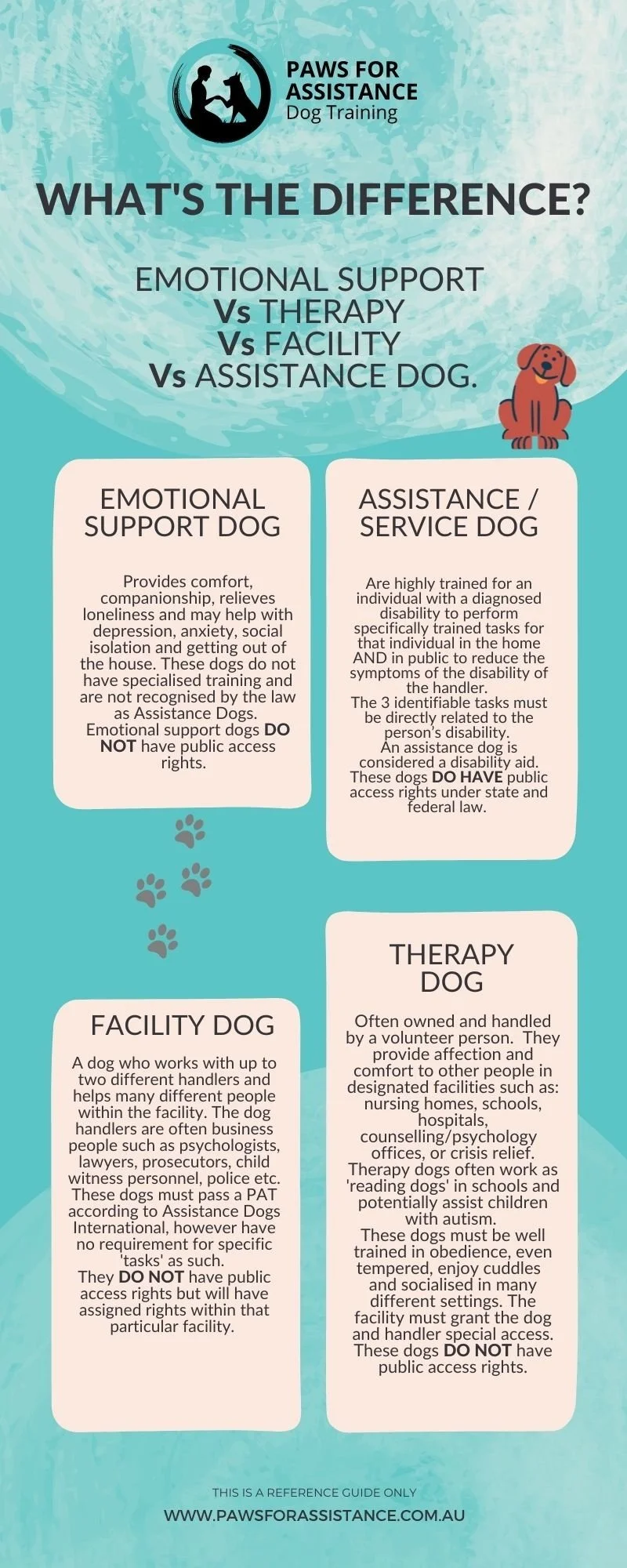Emotional support vs Therapy vs Assistance Dog
Many people use the terms assistance, therapy and emotional support dogs interchangeably. They have very different legal definitions.
Emotional Support dogs: provides comfort, companionship, relieve loneliness and may help with depression, anxiety and getting out of the house. These dogs do not require specialised training and are not recognised by the law as Assistance Dogs. They DO NOT have public access rights.
Therapy Dogs: Often owned and handled by a volunteer person. They provide affection and comfort to other people in designated facilities such as: nursing homes, schools, hospitals, counselling offices and disaster or crisis relief. Therapy dogs may work as ‘reading dogs’ in schools and potentially assist children with higher needs. These dogs must be well trained in obedience, even tempered and socialised in many different settings. The facility must grant the dog and handler special access. These dogs DO NOT have public access rights.
Assistance Dogs (Service Dogs USA): are highly trained for an individual with a diagnosed disability to perform specific tasks in the home AND in public to reduce the symptoms of the disability of the handler. The 3 identifiable tasks must be directly related to the person’s disability. In essence, the dog is considered a disability aid. These dogs DO HAVE public access rights under the ‘Disability Discrimination Act 1992’ and some state government Acts.
Facility Dog: A dog who works with up to two different handlers and helps many different people within the facility. The dog handlers are often business people such as psychologists, lawyers, prosecutors, child witness personnel, police etc. These dogs must pass a PAT according to Assistance Dogs International however, have no requirement for specific ‘tasks’ as such. Facility dogs DO NOT have public access rights but will have assigned rights within that particular facility.

